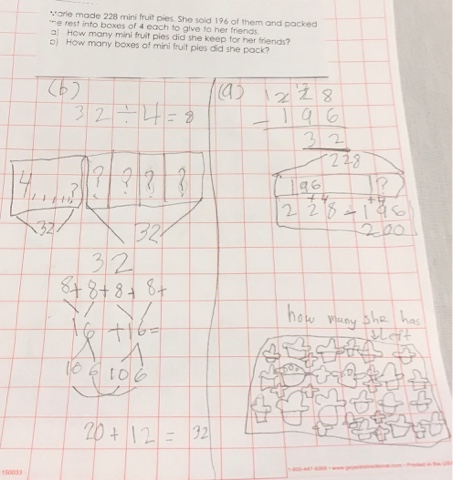This blog is about teacher professional development courses that I conduct in Singapore and other countries.
Wednesday, June 29, 2016
Monday, June 27, 2016
London, England | 27.28.29 June 2016
Day 1 focuses on the basic operations and how they can be learnt. We looked at the lesson format, features of lessons and supporting research and theories.
Friday, June 24, 2016
Jacksonville, USA | 25.26 June 2016
'In the opening session we looked at two examples of situations, one pure one applied, which students experience so that they learn to describe their observations verbally using common language and formally using terms, expressions, equations and functions. We looked at linear and exponential function. We also got talking a bit about factors such as expectations and motivations in mathematics learning.
Thursday, June 23, 2016
Jacksonville, USA | 22.23 June 2016
Session 8 on Problems involving Measurements
We ended the session with the invite to poke holes at the arguments presented. The class surfaced the bar model but it was not used. Here I present how the bar model might be completed. Method 2 3x60 - no one managed to argue against it successfully ... Here I present a little more to guide you to see its flaw. Method 3 70x6 was surfaced and here I present the complete argument. Method 4 Algebraic Method is one that was explained to me after the day ended by one of your friends.
I do this now so that you get sleep tonight. See you next year!
Open Lesson
Monday, June 20, 2016
Jacksonville, USA | 20.21 June 2016
Grade K-2 Institute focuses on development of number sense and visualization. How do we do that through anchor tasks? Here are slides from the various sessions.
Also available on Ban Har Yeap's Facebook
Also available from https://www.facebook.com/banhar.yeap/media_set?set=a.10153743933280975.1073742143.586125974&type=3&uploaded=6
Opening Session on Developing Number Sense
Children should have many opportunities to decompose numbers (number bonds) and continue to use number bonds in say subtraction and addition. They should move a way from counting methods to making ten and other mental strategies. They learn number sense through concrete materials, interaction, and the use of language.
We discussed the connection between sorting and counting - counting in the same nouns.
These apps are used throughout the institute.
These are concrete materials for counting - ten frames and counters, initially, and base ten blocks, eventually.



We initiated discussion on journaling. Sarah did an entire session on journaling.
Open Lesson to review ideas discussed on Day 1 and to stimulate thinking about DI and assessment.

Student Journal
An anchor task to provide advanced thinking (looking for patterns in a lesson on practice) but also advanced content (doing multiplication on the day when the lesson is on subtraction).
We looked at situations on multiplication.
Session on Assessment
I talked about the types of items on a test that is used for summation assessment. Sarah talked about managing formative assessment data. We talked about formative assessment throughout the institute.
Tuesday, June 14, 2016
Stockholm, Sweden | 15.16.17 June 2016
One-Day Course on 17/6/2016
We looked at two anchor tasks and the five features of a Mathematics classroom. We also looked at the theoretical underpinnings.
Day 2 Examples | 16/6/16
Day 1 Examples | 15/6/16
Subscribe to:
Posts (Atom)





























































